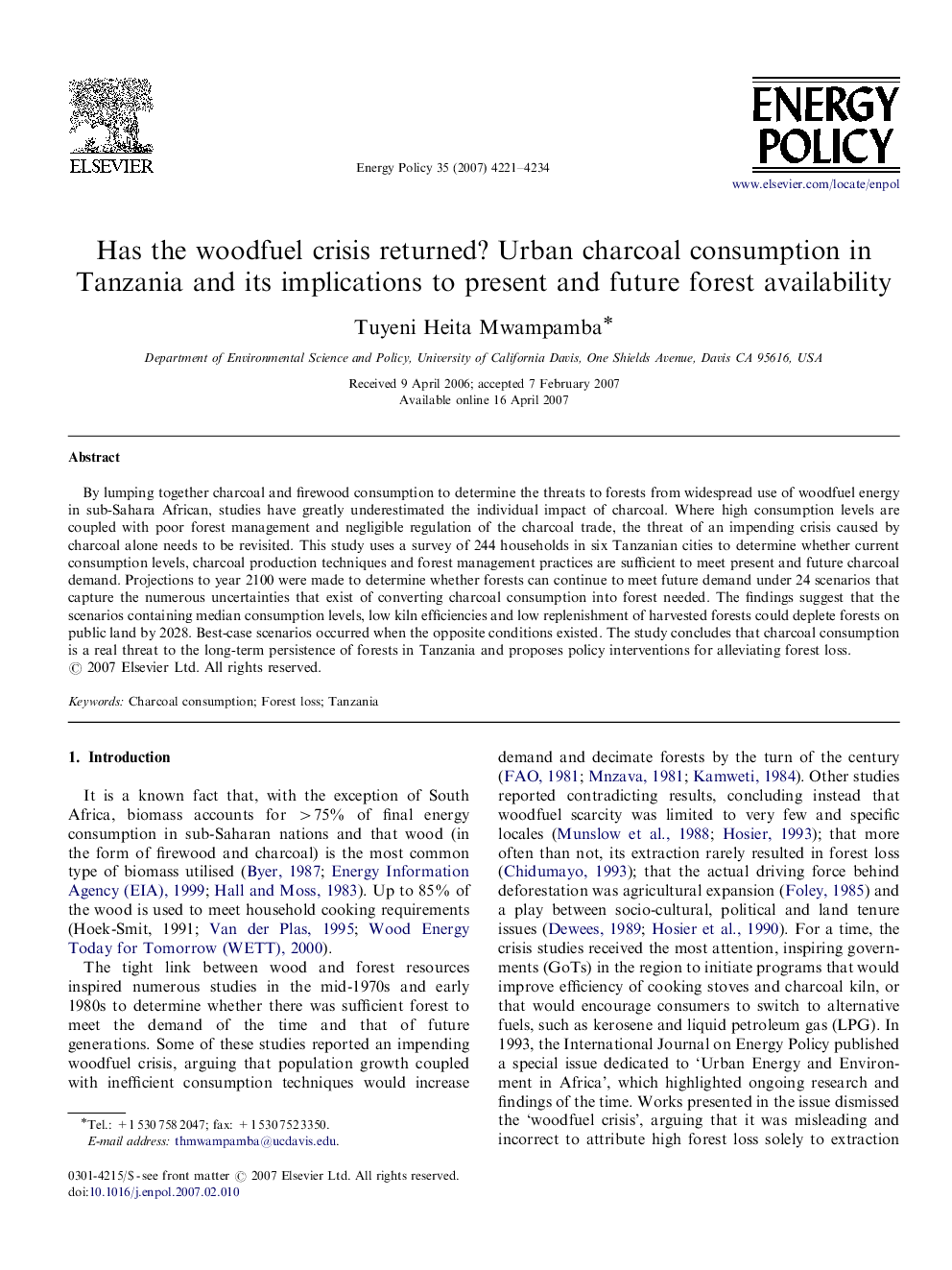| Article ID | Journal | Published Year | Pages | File Type |
|---|---|---|---|---|
| 995390 | Energy Policy | 2007 | 14 Pages |
By lumping together charcoal and firewood consumption to determine the threats to forests from widespread use of woodfuel energy in sub-Sahara African, studies have greatly underestimated the individual impact of charcoal. Where high consumption levels are coupled with poor forest management and negligible regulation of the charcoal trade, the threat of an impending crisis caused by charcoal alone needs to be revisited. This study uses a survey of 244 households in six Tanzanian cities to determine whether current consumption levels, charcoal production techniques and forest management practices are sufficient to meet present and future charcoal demand. Projections to year 2100 were made to determine whether forests can continue to meet future demand under 24 scenarios that capture the numerous uncertainties that exist of converting charcoal consumption into forest needed. The findings suggest that the scenarios containing median consumption levels, low kiln efficiencies and low replenishment of harvested forests could deplete forests on public land by 2028. Best-case scenarios occurred when the opposite conditions existed. The study concludes that charcoal consumption is a real threat to the long-term persistence of forests in Tanzania and proposes policy interventions for alleviating forest loss.
